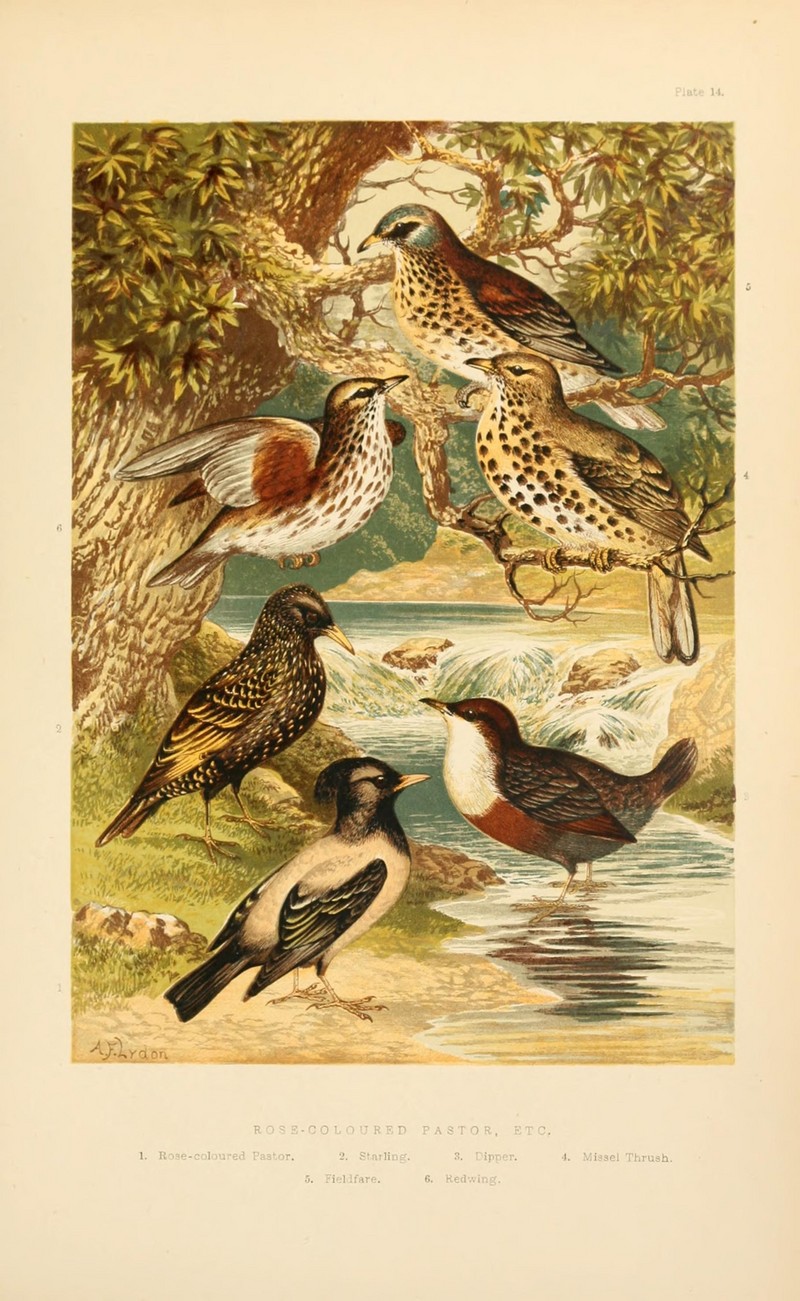|
| Query: Birds of europe | Result: 61st of 1706 | |
rosy starling (Pastor roseus), European starling (Sturnus vulgaris), white-throated dipper (Cinclus cinclus), mistle thrush (Turdus viscivorus), fieldfare (Turdus pilaris), redwing (Turdus iliacus)
| Subject: | rosy starling (Pastor roseus), European starling (Sturnus vulgaris), white-throated dipper (Cinclus cinclus), mistle thrush (Turdus viscivorus), fieldfare (Turdus pilaris), redwing (Turdus iliacus)
| | Poster: | Wiki Photos (---@---.---)
| |

| Resolution: 1814x2951
File Size: 782050 Bytes
Upload Date: 2017:03:07 16:42:02
|
Description
ROSE-COLOURED PASTOR, ETC,
1. Rose-coloured Pastor. 2. Starling. 3. Dipper. 4. Missel Thrush. 5. Fieldfare. 6. Redwing.
Date 1894
Source http://www.flickr.com/photos/biodivlibrary/8053845896
Author Adams, H. G.; Adams, Henry B.
Full title The smaller British birds : with descriptions of their nests, eggs, habits / by H. G. and H. B. Adams.
Source: https://commons.wikimedia.org/wiki/File:The_smaller_British_birds_(8053845896).jpg
1. Rose-coloured Pastor.
The rosy starling (Pastor roseus) is a passerine bird in the starling family, Sturnidae, also known as the rose-coloured starling or rose-coloured pastor.
2. Starling.
The common starling or European starling or starling (Sturnus vulgaris) is a medium-sized passerine bird in the starling family, Sturnidae. The common starlings breed in open habitats across its native range in temperate Europe and western Asia.
3. Dipper.
The white-throated dipper (Cinclus cinclus), also known as the European dipper or just dipper, is an aquatic passerine bird found in Europe, Middle East, Central Asia and the Indian Subcontinent.
4. Missel Thrush.
The mistle thrush (Turdus viscivorus) is a bird common to much of Europe, Asia and North Africa. It is a year-round resident in much of its range, but northern and eastern populations migrate south for the winter, often in small flocks.
5. Fieldfare.
The fieldfare (Turdus pilaris) is a member of the thrush family Turdidae. It breeds in woodland and scrub in northern Europe and Asia. It is strongly migratory, with many northern birds moving south during the winter.
6. Redwing.
The redwing (Turdus iliacus) is a bird in the thrush family, Turdidae, native to Europe and Asia, slightly smaller than the related song thrush. |
^o^
Animal Pictures Archive for smart phones
^o^
|
|